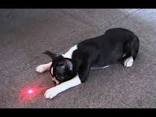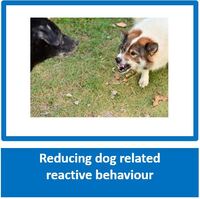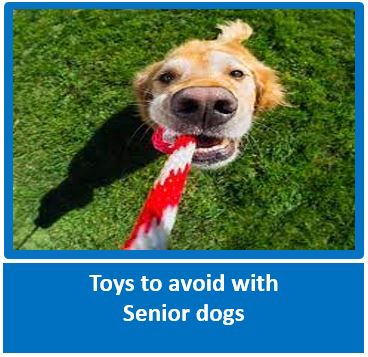
Please visit and LIKE / FOLLOW our Facebook Page and share with family, friends and on your own Facebook page, and ask them to share further – it is only by working together and sharing knowledge and education that we can improve the lives of dogs and assist owners. We do not inundate you with posts – an average of 5 per week, plus one Tip of the Week, and the odd informative post. Thank You!
Can I use a Laser Pointer to entertain my dog?
By Scotty Valadao – Accredited Behaviour Consultant : TTouch Practitioner
Founder - Friends of the Dog
By Scotty Valadao – Accredited Behaviour Consultant : TTouch Practitioner
Founder - Friends of the Dog
My very first response when answering this question is – NO! Although many people use these devices to play or train their dogs with no problems, there are many other owners that have used this device (myself included) and ended up with a dog exhibiting compulsive behaviours.
When my Collie, Brady was a puppy, I had read in a book written by an expert that this device can do no harm whatsoever, so when my son produced one and started playing with Brady, we all (dog included) had great fun watching him chase the light all over the room and outside and this became a favourite game. However, the new chasing game did not last a long time as the laser was either lost or broken, but Brady did continue chasing shadows on occasion.
I did notice that when we were outside at night and the security lights were on, he would chase shadows, but as his behaviour never verged on anything resembling compulsive behaviour, I did not give the chasing a second thought.
A few years later our family went through a very stressful time and right after this period, I was overseas for several weeks. When I returned I noticed that not only had Brady’s shadow chasing at night started again, he was showing signs of compulsive behaviour. When he started, unless you distracted him right at the beginning, nothing would convince the dog that this wonderful game was over. Even when the outside lights were turned off, he would stand staring at where the shadow had last been, and would scratch at the place he had seen it, and I realized that we did, indeed, have a problem.
Watching him carefully the following day, I also noted that if the sun hit a watch, or similar, and a reflection of this was seen on the floor or wall, the chasing started immediately, and again verged on being compulsive. The trouble with compulsive behaviour is that it does tend to worsen.
This resulted in weeks of behaviour modification to extinguish the behaviour. Compulsive behaviour is no joke, and very often veterinary assistance is required as well as intensive behaviour modification.
So why then had my dog develop obsessive tendencies? My own thoughts on this are that when there is stress in the dogs family, behaviours like this are more likely to occur. We had had a very stressful family time, I had been away for several weeks, he did not receive his normal exercise and mental stimulation, and I believe the combination of these factors, ‘pushed him over the edge’, as the saying goes. If he had not been exposed to the laser in puppyhood, who knows whether or not he would have started another behavioural concern.
Additionally, some breeds seem to have a greater tendency to develop abnormal behaviours when exposed to devices such as laser pointer, such as breeds that are used for Service and Herding work. This is not to say that these breeds will automatically develop compulsive behaviour, many Service dogs are trained with the laser point. I think it is more a case of the breed, together with stress factors can cause the behaviour. However, if your own dog is not one of breeds mentioned, it does not mean that your dog is safe from exhibiting compulsive tendencies if exposed to a laser pointer – it would be much safer not to use one at all, and rather get your dog to chase a ball or a similar object.
Signs that compulsive behaviour may be developing
If you are using a laser pointer and you see your dog start to engage in ANY of the above behaviour, stop using the laser immediately. If the behaviour continues, get hold of an expert for help. Where Brady was concerned, I am happy to say that with the correct behaviour modification the problem was resolved - I did however keep an eye on him to ensure that this did not happen again.
If you are using a laser pointer for training.
If you are using a laser pointer for teaching the dog to ‘target’ a laser dot for which it often used, you should introduce movement very slowly, and only use the laser to teach that specific behaviour – not to be used as a game for a dog to chase.
When my Collie, Brady was a puppy, I had read in a book written by an expert that this device can do no harm whatsoever, so when my son produced one and started playing with Brady, we all (dog included) had great fun watching him chase the light all over the room and outside and this became a favourite game. However, the new chasing game did not last a long time as the laser was either lost or broken, but Brady did continue chasing shadows on occasion.
I did notice that when we were outside at night and the security lights were on, he would chase shadows, but as his behaviour never verged on anything resembling compulsive behaviour, I did not give the chasing a second thought.
A few years later our family went through a very stressful time and right after this period, I was overseas for several weeks. When I returned I noticed that not only had Brady’s shadow chasing at night started again, he was showing signs of compulsive behaviour. When he started, unless you distracted him right at the beginning, nothing would convince the dog that this wonderful game was over. Even when the outside lights were turned off, he would stand staring at where the shadow had last been, and would scratch at the place he had seen it, and I realized that we did, indeed, have a problem.
Watching him carefully the following day, I also noted that if the sun hit a watch, or similar, and a reflection of this was seen on the floor or wall, the chasing started immediately, and again verged on being compulsive. The trouble with compulsive behaviour is that it does tend to worsen.
This resulted in weeks of behaviour modification to extinguish the behaviour. Compulsive behaviour is no joke, and very often veterinary assistance is required as well as intensive behaviour modification.
So why then had my dog develop obsessive tendencies? My own thoughts on this are that when there is stress in the dogs family, behaviours like this are more likely to occur. We had had a very stressful family time, I had been away for several weeks, he did not receive his normal exercise and mental stimulation, and I believe the combination of these factors, ‘pushed him over the edge’, as the saying goes. If he had not been exposed to the laser in puppyhood, who knows whether or not he would have started another behavioural concern.
Additionally, some breeds seem to have a greater tendency to develop abnormal behaviours when exposed to devices such as laser pointer, such as breeds that are used for Service and Herding work. This is not to say that these breeds will automatically develop compulsive behaviour, many Service dogs are trained with the laser point. I think it is more a case of the breed, together with stress factors can cause the behaviour. However, if your own dog is not one of breeds mentioned, it does not mean that your dog is safe from exhibiting compulsive tendencies if exposed to a laser pointer – it would be much safer not to use one at all, and rather get your dog to chase a ball or a similar object.
Signs that compulsive behaviour may be developing
- Your dog does not listen or respond to you calling him/her when chasing the laser dot
- Pawing, scratching or patrolling the area where the laser dot was last seen
- Repeatedly returning to the area where the laser dot was last seen
- Developing strong chasing behaviour for other shadow or light sources.
If you are using a laser pointer and you see your dog start to engage in ANY of the above behaviour, stop using the laser immediately. If the behaviour continues, get hold of an expert for help. Where Brady was concerned, I am happy to say that with the correct behaviour modification the problem was resolved - I did however keep an eye on him to ensure that this did not happen again.
If you are using a laser pointer for training.
If you are using a laser pointer for teaching the dog to ‘target’ a laser dot for which it often used, you should introduce movement very slowly, and only use the laser to teach that specific behaviour – not to be used as a game for a dog to chase.





